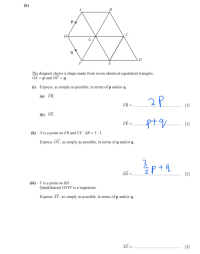Kulla_9289
Junior Member
- Joined
- Apr 18, 2022
- Messages
- 223
I know it's a guideline to show my work, but I don't even know how to start this problem, so please make an exception. I do know how to do the questions before but I have no clue how to start the last question. How would you solve without knowing the ratios? A guide to the right path will be highly appreciated.
Attachments
Last edited:





